How often do we think that it’s, “so cute” when our dogs, especially puppies, play with or chew on certain “harmless” objects around the house? Sometimes, we even inadvertently encourage the behavior by making some of these objects into play toys, or, worse yet, giving dogs “toys” that closely resemble household items.
Over the years, I’ve seen many toys that I would not encourage, including:
- Stuffed toys that look just like kid’s stuffed dolls and toys
- Rawhide chews shaped like shoes
- Dental chews shaped like their own, or our own, toothbrushes
There’s no doubt it’s adorable to watch dogs chew, or as one my dogs loves to do, suck on these toys or dolls, but we have to understand that differentiating these items from other items around our homes that show a close resemblance is not easy for many of our dogs. Additionally, some of these “toys” may not be as safe for our pets as we would like to think.
Safe toy tips for dogs
Much has been written here at Pet Health Network about dangerous pet toys, and now I want to provide some of my own guidelines about how to choose SAFE toys and chews for your dogs to play with:
1. Look for toys that are fairly indestructible
Even for that Pitbull, Mastiff or Rottweiler! Hard nylon toys or hard rubber toys may be the answer. But even with these, watch the edges as they can become fairly sharp. Make sure no large chunks have been broken off, and if so, discard them. Avoid the soft rubber toys.
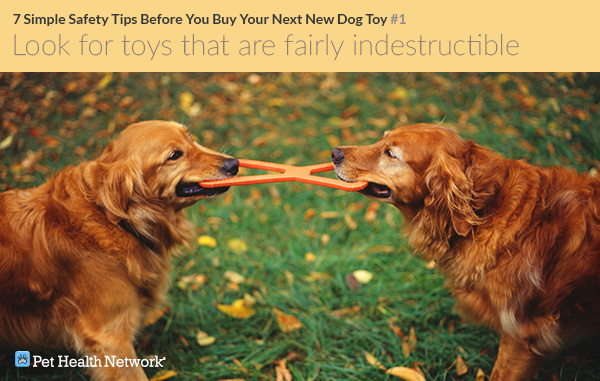
2. Keep an eye on rope toys
Toys with hard nylon or rubber that are connected together by a thick rope may be ok for a while, but again, keep your eyes on that rope to make sure it remains intact.
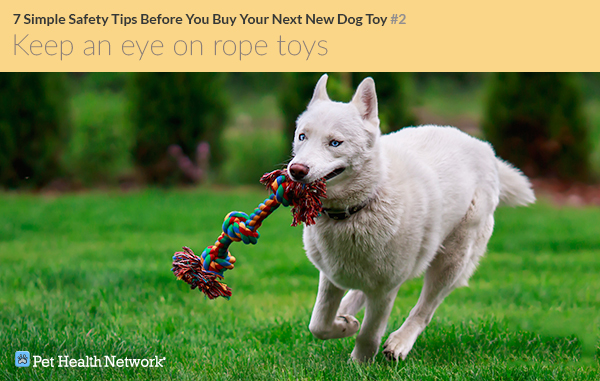
3. Beware toys with bells
Toys with bells, or squeakers on the inside are not a great idea because they are often the first things your dog will remove, and possibly swallow.
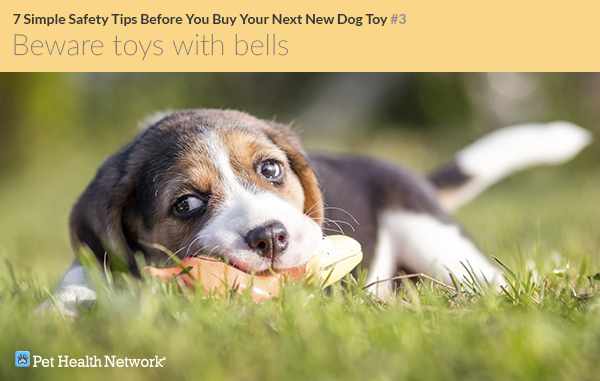
[Learn about the dangers of esophageal foreign bodies in dogs]
4. Watch for rips and tears
Well constructed plush or thick fabric toys can also be very safe, but if they should break or tear at a seam, it might be time to say “goodbye,” and buy another one. The stuffing can end up all over your home, or worse yet, in your dog’s stomach.
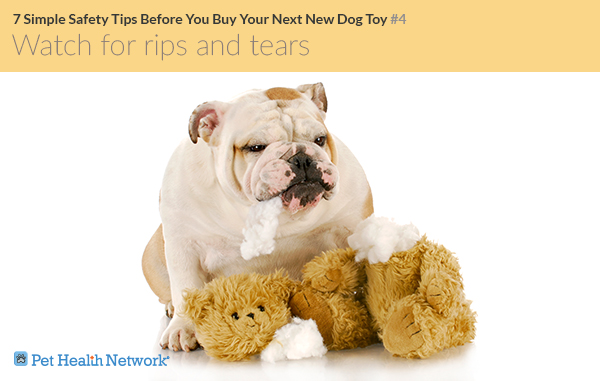
[Learn about foreign body surgery]
5. Rawhide chews have their pros and cons!
Let’s face it—dogs do love them, and rawhide can keep them occupied for a while. With these, I have a few suggestions, however. If you are going to buy the large ones, made of single sheets of rawhide that are rolled and knotted on each end, keep an eye on them. If, or better yet when, they become too soft and begin to unravel or break apart, toss them and give your dog a new one (fortunately these aren’t very expensive). What I like more are the pressed rawhide chews that, when chewed and softened, just break up into very small, easy and safe to swallow pieces. My caution is that with ANY rawhide chew product, make sure to stay away from those made in China until we learn more about the causes the illnesses we’ve heard about. To be really safe, stick to those made in the U.S. or those distributed and endorsed by reputable U.S. companies.
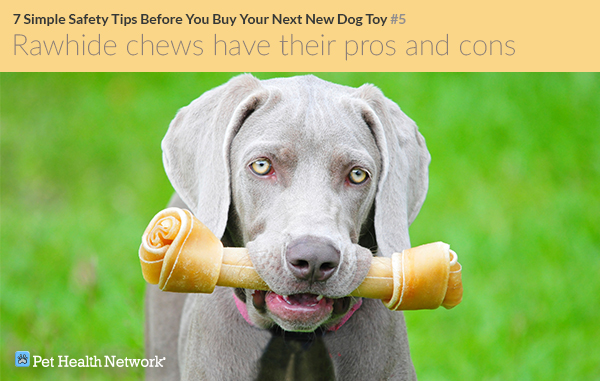
6. Dental chews have improved
The dental chews that are very popular are fairly safe now that the manufacturing process has changed to allow these to dissolve and soften once in contact with saliva. Again, stick with the name brands!
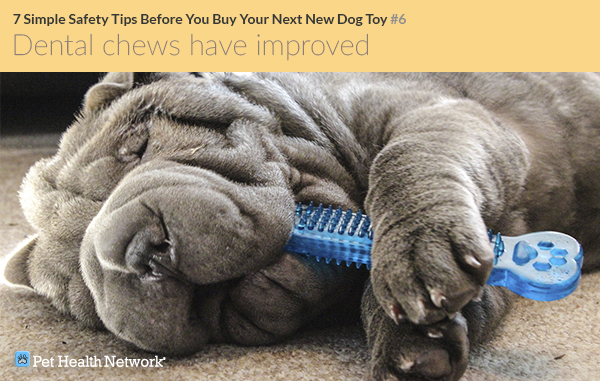
[Learn more about dental health for dogs]
7. Find the right size toy
A general caution with any toy and chew is that you purchase the appropriate size for your pet’s mouth. Something too small can definitely be swallowed whole and can lodge somewhere in the intestinal tract. If too large, it will probably defeat its purpose, or, if your intent is to break it up into smaller pieces — to get more for your money — you might inadvertently break a piece too small, which could be dangerous.
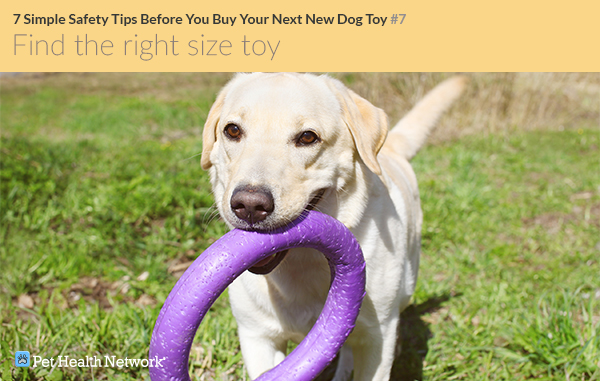
As always, check with your veterinarian if you have any questions about the efficacy and safety of anything you’re planning on purchasing for your dog.
